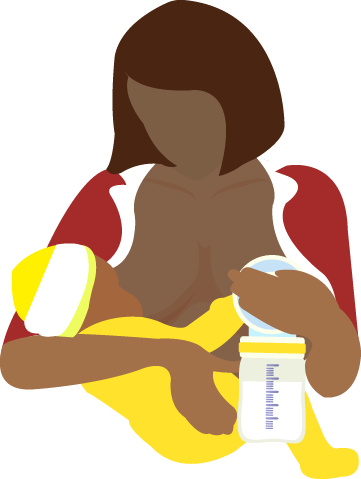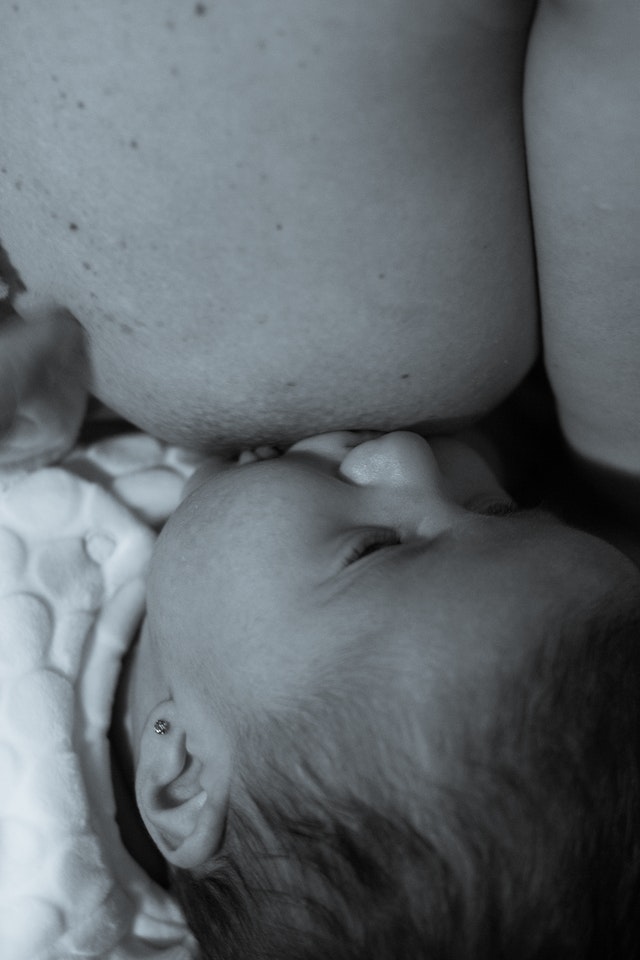What is breast engorgement, and what causes it?
Breast engorgement means your breasts are painfully overfull of milk. This usually occurs when a mother makes more milk than her baby uses. Your breasts may become firm and swollen, which can make it hard for your baby to breastfeed. Engorged breasts can be treated at home.
Engorgement may happen:
When your milk first comes in, during the first few days after birth.
When you have a regular breastfeeding routine but can’t nurse or pump as much as usual.
If you suddenly stop breastfeeding.
When your baby suddenly starts breastfeeding less than usual. This may happen when your baby is starting or increasing solid foods or when your baby is ill and has a poor appetite.
Your breasts start making milk about 2 to 5 days after your baby is born. (Before that, they make colostrum, which contains important nutrients that your baby needs right after birth.) It’s normal for your breasts to feel heavy, warm, and swollen when your milk “comes in.” This early breast fullness is from the milk you make and extra blood and fluids in your breasts. Your body uses the extra fluids to make more breast milk for your baby.
This normal breast fullness will probably go away in a few days as you breastfeed and your body adjusts to your baby’s needs. Your breasts may become painfully engorged if you aren’t breastfeeding your baby often or if the feedings don’t empty your breasts.
Your breasts will be engorged for several days if you don’t or can’t breastfeed after your baby is born. This will gradually go away if your breasts are not stimulated to make milk. At present, there is no approved medicine to “dry up” your milk supply and prevent engorgement.
If you have any concerns or questions, you can work with a lactation consultant. This is someone who helps mothers learn to breastfeed.
What are common symptoms?
Symptoms of engorged breasts include:
Swollen, firm, and painful breasts. If the breasts are severely engorged, they are very swollen, hard, shiny, warm, and slightly lumpy to the touch.
Flattened nipples. The dark area around the nipple, the areola, may be very firm. This makes it hard for your baby to latch on.
A slight fever of around 100.4°F (38°C).
Slightly swollen and tender lymph nodes in your armpits.
What can happen if breast engorgement gets worse?
If engorgement is severe, your breasts get very swollen and painful. Severe engorgement can make it hard for your baby to latch on to the breast properly. As a result:
Your baby may not get enough milk.
Your breasts may not empty completely.
Your nipples may become sore and cracked. This may cause you to breastfeed less, and that makes the engorgement worse.
Severe engorgement can lead to blocked milk ducts and breast infection, which is called mastitis. Mastitis needs to be treated with antibiotics.
How is it treated?
If engorgement is making it hard to breastfeed, use the following steps. They can relieve your symptoms and keep your milk flowing.
Soften your breasts before feedings. You can apply a warm compress for a couple of minutes before you breastfeed. Or you can use your hands or use a pump to let out (express) a small amount of milk from both breasts.
Try to breastfeed more often. Pump your breasts if your baby won’t breastfeed. Take care to empty your breasts each time.
Take ibuprofen (such as Advil or Motrin) to reduce pain and swelling. Ibuprofen is safe for breastfeeding moms when taken as directed. But it’s a good idea to check with your doctor before you take any kind of medicine while breastfeeding.
If your breasts still feel uncomfortable after nursing, try a cold compress to reduce swelling. You can use a frozen wet towel, a cold pack, or a bag of frozen vegetables. Apply it to your breasts for 15 minutes at a time every hour as needed. To prevent damage to your skin, place a thin cloth between your breast and the cold pack.
If you are not breastfeeding, use one or more of these steps to relieve discomfort:
Do not pump or remove a lot of milk from your breasts. If your breasts are very painful, it’s okay to remove just a little bit to make you more comfortable.
Apply a cold pack to your breasts for 15 minutes at a time every hour as needed. To prevent damage to your skin, place a thin cloth between your breast and the cold pack.
Take ibuprofen (such as Advil or Motrin) in addition to using non-medicine treatments. Be safe with ibuprofen. Read and follow all instructions on the label.
Wear a bra that fits well and provides good support.
How can you prevent breast engorgement?
You may be able to prevent engorgement if you keep milk moving out of your breasts and take care not to let your breasts become overfilled.
Breastfeed whenever you notice signs that your baby is hungry, such as eagerly sucking on fingers or rooting.
Make sure that your baby is latching on and feeding well. If your breasts are hard and overfilled, let out (express) enough to soften your nipples before putting your baby to the breast.
Empty your breasts with each feeding. Empty one breast completely before you switch to the other side. You can tell that it’s time to switch sides when both of the following things happen:
Your baby’s sucking slows down a lot or stops.
You can no longer hear your baby swallowing.
Source: University of Michigan
Link: https://www.uofmhealth.org/health-library/hw133953




